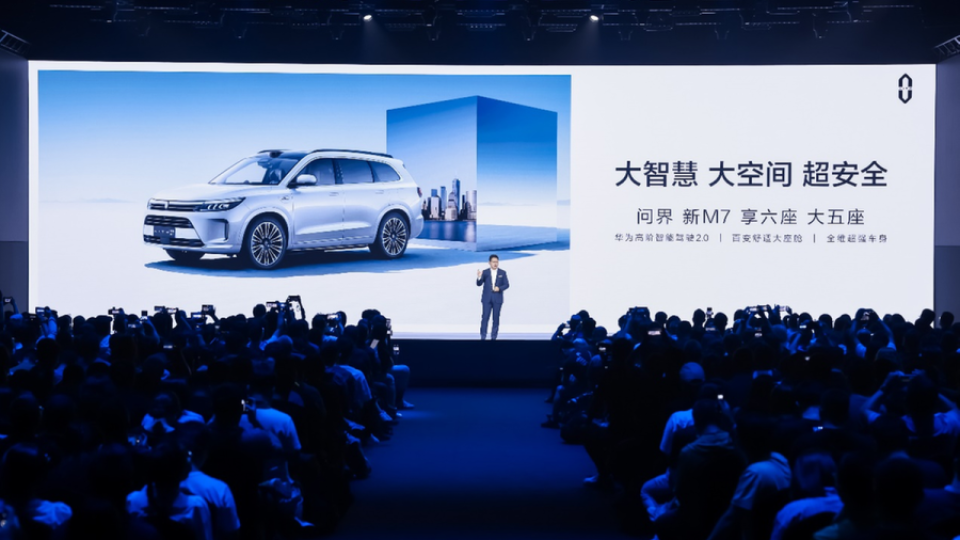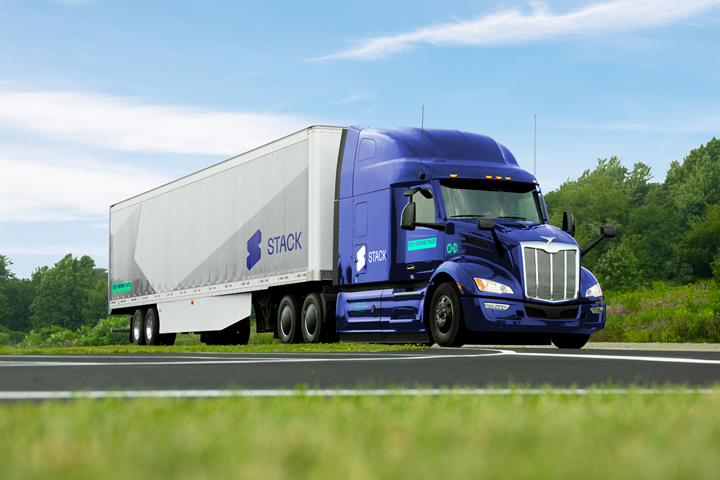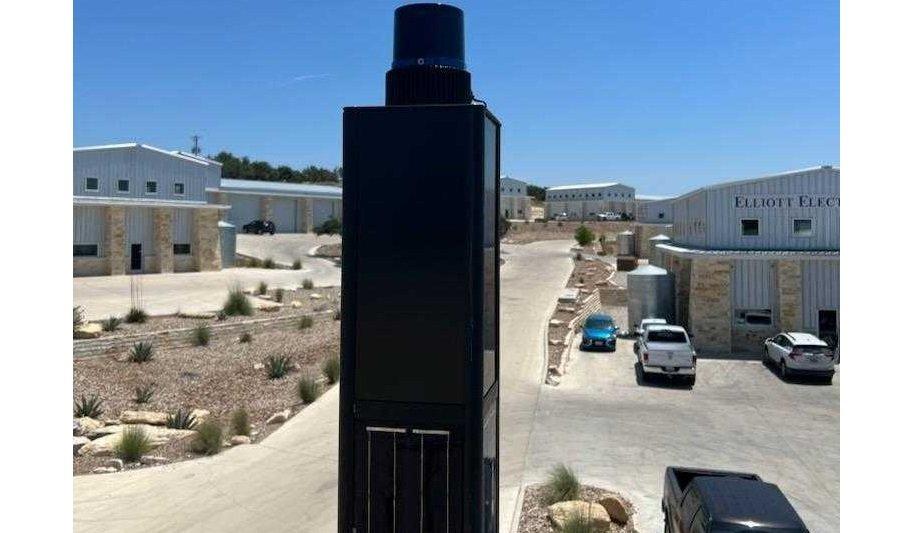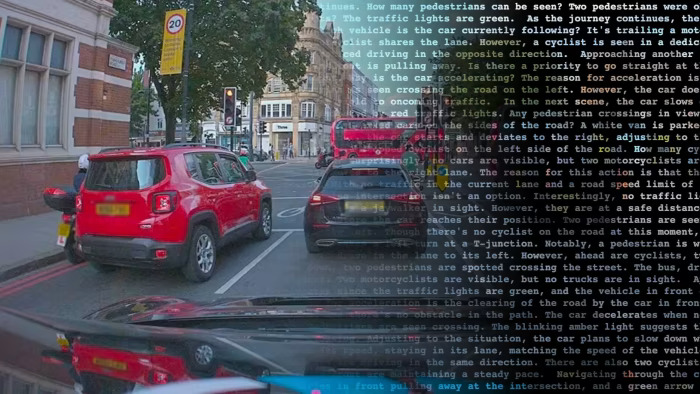
Vueron Newsletter
No. 48
2023.09.15
| Huawei, Seres launch latest smart SUV with autonomous driving tech | ||
| Volkswagen and Horizon Robotics make headway in self-driving joint venture | ||
| Quanergy and PowerStack Partner to Offer Q-Track with Off-grid Smart Poles | ||
| UK start-up Wayve unveils self-driving system that explains its actions |
1. Huawei, Seres launch latest smart SUV with autonomous driving tech
-
- Huawei and Seres have jointly launched a new sport utility vehicle called the M7 with advanced autonomous driving features.
- The M7 can autonomously navigate urban roads and expressways without relying on high-definition maps.
- It incorporates the second version of Huawei’s autonomous driving system (ADS) that has accumulated a reservoir of traffic scenarios since its April launch.
- The ADS requires one manual intervention per 200 kilometers during long-haul trips and can navigate urban scenarios expertly.
- The vehicle is equipped with 27 sensors, including lidar, radar assemblies, and high-definition cameras to enhance its autonomous driving capabilities.
- It features the Harmony operating system, allowing seamless integration with other Huawei products, such as smartphones and tablets.

AITO, the brand co-developed by Huawei and automakers, had lower sales in August compared to the previous year and lags behind other electric vehicle startups like Li Auto and Nio. Analysts have mixed opinions on AITO’s prospects, with some believing that Huawei’s technological strength will contribute to its success.
2. Volkswagen and Horizon Robotics make headway in self-driving joint venture
-
- Volkswagen’s software subsidiary, Cariad, and Horizon Robotics announced a joint venture aimed at enhancing Level 2 assisted driving and other intelligent driving features.
- Volkswagen invested USD 2.4 billion in the joint venture and holds a controlling 60% stake. Over 100 employees from Horizon Robotics’ software algorithm team will join the project.
- Horizon Robotics’ co-founder and CTO, Huang Chang, will lead the joint venture, referred to as “VW” within the company.
- Intelligent driving is highly competitive in the Chinese market, with European automakers slower to adapt.
- Volkswagen’s Cariad faced a USD 2 billion loss and struggled in the Chinese market, resulting in a focus on technology and software development.
- Volkswagen also invested in Chinese EV maker Xpeng Motors and aims to jointly develop models for China’s mid-sized car market.
- Horizon Robotics is focusing on autonomous driving solutions, particularly highway Navigate on Autopilot (NoA), with plans to expand into urban environments by 2025.
- The company is reorganizing resources and delegating its smart cockpit business to a subsidiary to concentrate on self-driving features.

Volkswagen’s previous struggles in the Chinese market and its “in China for China” strategy highlight the importance of technology and software development in capturing market share. The joint venture with Horizon Robotics and the investment in Xpeng Motors allow Volkswagen to access advanced autonomous driving technologies from different sources.
3. Stack AV Launches Autonomous Trucking Business to Revolutionize the Transportation of Goods
-
- Stack AV has announced the launch of its autonomous trucking business, aiming to use self-driving technology to improve efficiency and safety in the trucking industry and address supply chain challenges.
- The company’s focus is on revolutionizing goods transportation by addressing long-standing industry issues such as driver shortages, vehicle uptime efficiency, safety concerns, high operating costs, and emissions.
- Stack AV aims to create efficient and safe autonomous trucking solutions to enhance supply chains, improve business outcomes, deliver goods faster, and advance the trucking industry.
- The company is confident in its proprietary technology and its partnership with SoftBank, which provides capital, resources, and AI expertise to support Stack AV’s growth and technological advancements.
- Stack AV’s leadership team, including CEO Bryan Salesky, President Peter Rander, and CTO Brett Browning, boasts over seven decades of combined experience in autonomous systems, robotics, and AI.
- The company is headquartered in Pittsburgh, Pennsylvania, has 150 employees across its headquarters and 15 states, and uses an innovative remote-work/co-working collaboration model.

Stack AV’s entry into the autonomous trucking sector reflects the growing interest and investment in autonomous transportation solutions to transform the logistics and supply chain industries.
4. Quanergy and PowerStack Partner to Offer Q-Track with Off-grid Smart Poles
-
- Quanergy Solutions has formed a strategic partnership with PowerStack, a leader in off-grid smart power poles, to address security challenges in remote critical infrastructure environments, including utilities and data centers.
- These remote locations often lack access to power and infrastructure, relying on costly and inaccurate legacy security solutions that generate false alarms.
- Quanergy’s Q-Track integrates its long-range 3D LiDAR sensors with advanced perception software to provide hyper-accurate 3D intelligent awareness for improved security and reduced false alarms.
- PowerStack’s modular solar poles offer a sustainable and cost-effective off-grid power solution for safety, security, and smart technologies, including lighting, cameras, wireless sensors, and communications networks.
- The integration allows remote sites to deploy Quanergy’s Q-Track without the need for AC power supply or data infrastructure, improving security and reducing false alerts.
- This partnership addresses the challenges of deploying security solutions in remote locations with limited access to power and infrastructure.

The collaboration between Quanergy and PowerStack combines advanced security technology with sustainable off-grid power solutions to enhance security in remote critical infrastructure environments. This partnership exemplifies the increasing importance of combining innovative technologies to address security and infrastructure challenges in critical remote environments.
5. UK start-up Wayve unveils self-driving system that explains its actions
-
- UK start-up Wayve has developed a self-driving car system called Lingo-1 that can explain its actions in plain English, addressing the transparency issue in AI decision-making.
- Lingo-1 can answer questions and clarify why it made specific decisions, enhancing passengers’ understanding of the technology.
- While the system demonstrated the ability to explain speed and surroundings, it faced challenges when asked about complex scenarios, indicating the need for further training.
- Wayve’s approach to autonomous driving differs from others, as it learns to drive by processing videos of humans driving and learning autonomously.
- The company’s technology aims to overcome challenges associated with rules-based systems and regulatory approval.
- Wayve’s “end-to-end” self-driving system incorporates rules from the Highway Code into its training and uses recent advances in large language models to produce explanations in text.
- While Wayve hasn’t provided a specific timeline for integrating Lingo-1 into its self-driving cars, the technology is seen as a step toward building trust and transparency in autonomous driving systems.

Wayve’s Lingo-1 addresses a critical challenge in the self-driving car industry by providing a system that can explain its decision-making in plain language, enhancing transparency. Wayve’s approach to autonomous driving, which learns from human driving behavior, is distinct from traditional rule-based systems and aligns with Tesla’s approach.
*Contents above are the opinion of ChatGPT, not an individual nor company

